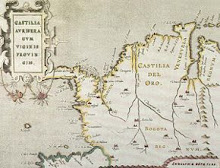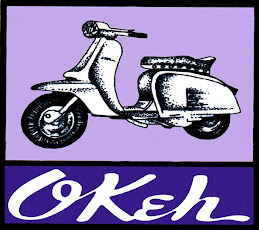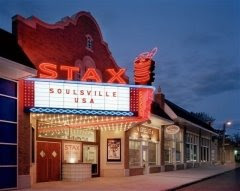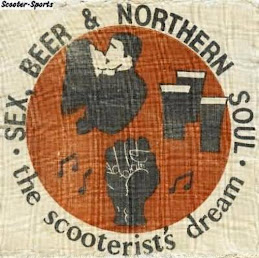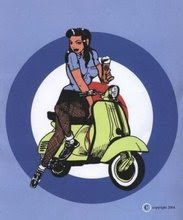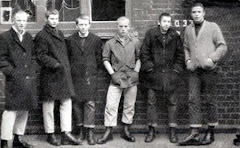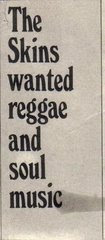
In the 1960's, the Megatons were a Motown/Soul style group from New Jersey, USA who were made up of 4 musicians (all White Men), and 1 lead singer (a Black Man).
The instrumentation included; bass, drums, guitar, and organ. The group performed in various nite-clubs throughout Jersey and had a large following of fans. In 1967, three of the group members (Bob Ligatino, bass, Eddie Dill, aka Eddie Charles, guitar, and Eugene Thomas, lead singer, decided to make some personnel changes, and
Mike Paladino, drums, and Joe DeJohn, organ, joined the Megatons.
Both Mike and Joe were cousins, and longstanding musicians, and had somewhat famous careers as backup musicians. Mike, on occasion, was personal drummer with The Four Seasons, and Joe played keyboard with Elvis Presley during Elvis' Las Vegas comeback period.
The Megatons, with a new drummer and organ player continued to perform playing the nite-club circuit. They rehearsed on their days off in Mike Paladino's mother's basement in Bound Brook, NJ. In attendance at most of the rehearsals was Mike's brother, Robert Paladino.
Robert performed and recorded with doo-wop, and jazz vocal groups in the early to mid 60's and had written some of their material. He decided to write especially for the Megatons, so, on an old beat-up guitar with missing strings, he composed 2 songs, "You Don't Love Me", and "Where Were You", which he sang for them. The response was positive for both songs! Robert expressed that he wanted to produce the group and record both songs, and that he knew of a newly opened studio close by in Bound Brook. The group agreed. Robert wrote the musical intro's for both songs, and worked with Joe in chord structure and key transpositions, while Eugene, created and sang the lead vocal, and the group arranged and played the basic track. Two female and three male voices, all local talent, would be the added background singers on the recordings.

click for full view
The studio was built inside of the old "Lyric Movie Theatre". It was only a two-track studio, and even though all of Robert's recordings were done at 4 track studios in NYC, he knew that the Bound Brook Studio called Venture Sound, could produce recordings with a unique sound. There were 2 reasons for this; one was due to the expertise and credentials of the two partners who owned the studio. Anthony Bongiovi(Jon Bon Jovi's Uncle) was the engineer, and Tony Camillo was the musical arranger and orchestra conductor. The 2nd reason was that their echo chamber was located in what was the former men's room of the theatre, built several feet below ground level. The natural echo and acoustics were near perfect, and Robert knew this from his past movie house visits. The studio partners would also become part of the magic that soon would touch their lives and help shape their futures.
It was now late 1967, and the recording dates had been scheduled. It was decided that the basic music tracks would be laid down first, which would include the acoustic guitar intro and accompaniment. A demo was cut to allow for the lead and background singers to practice with. We then went back into the studio to record the vocals. After completing this part of the production, Tony Camillo was asked to arrange and add strings to both recordings.
Tony Camillo was a classically trained musician, arranger/conductor. Previously, he primarily focused on the Big Band style of music, and had played bass in small combos. He played a function with Mike Paladino in the early 60's and said he would never play rock-and-roll, because it wasn't his style of music. Now, a few years later, Tony was arranging and conducting for a Motown style soul record. It goes to show just how people change and events cause them to change.
The strings and horns were added by Tony Camillo, and Anthony Bongiovi did a great job in going from track to track on a 2 track system, with minimal generational sound loss. The final mix was completed the following week and a Master Tape created.
We now had a finished product, and Robert's intent was to find a label interested in releasing a 45 record with the support needed for its success.
It didn't take long to get feedback and offers. Shopping the record around in NYC, Alvin Cash, of "Twine Time" fame heard the demo, and offered to buy the rights to the record outright, and then Re-record it with another artist. We did not accept this offer, or future offers, such as from the manager of Jay and the Techniques of "Apples, Peaches, and Pumpkin Pie" fame to Re-record it with his group.
An offer was made by an upstart label out of Long Island, NY called "Sandbag Records". Their proposition from the two owners of Sandbag Records met our criteria for releasing it on a 45 within a specified timeframe, and for promoting the group by means of Record Hops and TV and Radio performances. Sandbag Records did not particularly like the name, The Megatons, so they asked us to come up with a new name. Bob Ligatino and his wife came of with a new name for the group, and "The Epitome of Sound" was it.

You Don't Love Me and Where Were You, by the Epitome of Sound on Sandbag Records were released in early 1968. The Epitome of Sound immediately began doing Records Hops led by the famous Disc Jockey, Dan Daniels from New York Radio Station, WMCA, along with top attraction recording artists such as the Left Bank, and Jay and the Techniques. A short time afterwards, they performed on The Upbeat TV Show from Cleveland, Ohio with Stevie Wonder, and again with Jay and the Techniques.
You Don't Love Me had reached No. 11 on the charts in Cleveland, and it looked like the Epitome of Sound was on their way to stardom! However, we were informed a few days later, that internal problems with Sandbag Records had emerged, and it appeared that possible bankruptcy was a possible outcome.
Well, all support for the record and The Epitome of Sound stopped as quickly as it started. The group broke up and then reformed as The Megatons. In addition to playing nite-clubs, Eddie and Bob opened their own recording studio in the 1970,s. Joe DeJohn, moved to California, where he still resides, and Mike Paladino, moved on to work with different groups, and then pursued a career in Sales. Eugene Thomas later became a solo act. Robert Paladino, worked with Nicky Addeo and Co. at the Jersey shore in the mid 1970's and then retired from AT&T/Lucent Tech. in 2000. Anthony Bongiovi, opened a recording studio in NYC, and besides recording some of the worlds biggest artists from Sinatra to Streisand, is a major innovator and developer of audio equipment. Tony Camillo, back in 1967 brought the demo of the Epitome of Sound along with his other portfolio of recordings to Motown, where he became Arranger/Conductor for Gladys Knight on her big hits of Midnight Train to Georgia, et al.
Robert Paladino
As I mentioned to Bob, '68 was a death knell for sweet sounding uptempo Soul 45's. As the USA were switched onto Vietnam, The Doors, Grateful Dead and on the Urban side 'Say it Loud, Im Black and Im Proud'
You Don't Love Me was discovered in early 1974 and re-named as Moses Smith to steer vinyl hounds from
the real identity.
As an exclusive at Wigan Casino, it shot to astonomical fame within the Northern Soul scene.
By the end of the century, You Dont Love Me positioned itself at no. 7 in the Northern Soul Top 500.
Consistently spun, the anthem shows no sign of subsiding in popularity.
Oddly enough, I had accquired two quarter inch masters from Mike Szymanski at Sandbag some 20 years ago, oblivious to Bob's whereabouts.
As one of the original Wigan Casino DJ's in 1974, the record gives me as much pleasure today as it did back then.
We owe that to the unique vocal of Eugene Thomas and the creativity of Robert Paladino and of course to the Northern Soul fans who have made it one of their own.
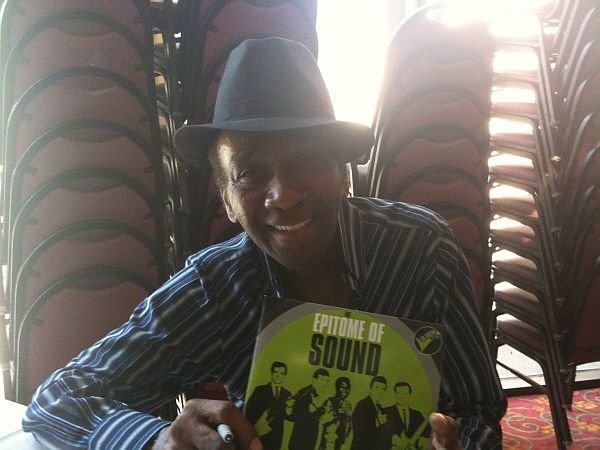
above added - apr 2011 click to view in full
Kev Roberts
The Epitome of Sound
En la década de 1960, el megatones eran Motown / grupo Alma estilo de Nueva York, EE.UU., que fueron compuestos de cuatro músicos (todos hombres blancos), y un cantante (un hombre Negro).
La instrumentación incluye, bajo, batería, guitarra y órgano. El grupo actuó en varios clubes a lo largo de Nite-Jersey y tenía un gran número de seguidores de los aficionados. En 1967, tres de los miembros del grupo (Bob Ligatino, bajo, Eddie eneldo, también conocido como Eddie Carlos, guitarra, y Thomas Eugene, cantante, decidió hacer algunos cambios de personal, y
Mike Paladino, la batería y Joe DeJohn, órgano, se unió a la megatones.
Tanto Mike y Joe eran primos, y músicos desde hace mucho tiempo, y había un poco famosa carrera como músicos de respaldo. Mike, en ocasiones, era el baterista personal con Las cuatro estaciones, y Joe tocaba el teclado con Elvis Presley durante el período de Elvis en Las Vegas regreso.
Los Megatones, con un nuevo baterista y organista siguió para llevar a cabo la reproducción del circuito de Nite-club. Empezaron tocando en sus días libres en el sótano de la madre de Mike Paladino en Bound Brook, NJ.En la asistencia a la mayoría de los ensayos fue el hermano Mike, Robert Palacios.
Robert tocado y grabado con el doo-wop, y grupos de jazz vocal en la primera mitad de los años 60 y había escrito algunos de sus materiales. Él se decidió a escribir especialmente para los megatones, por lo que, en un viejo destartalado guitarra con cuerdas de desaparecidos, compuso dos canciones, "You Don't Love Me", y "Where Were You", que cantó para ellos.La respuesta fue positiva para ambas canciones! Robert expresó que quería producir el grupo y grabar tanto canciones, y que sabía de un estudio cerca de reciente apertura por en Bound Brook. El grupo estuvo de acuerdo. Robert escribió la introducción musical para ambas canciones, y trabajó con Joe en la estructura acorde y transposiciones clave, mientras que Eugene, creó y cantó la voz principal, y se arregla el grupo y tocó la pista de base. Dos mujeres y tres voces masculinas, todo el talento local, serían los cantantes de fondo añadido en las grabaciones.
haga clic para una vista completa
El estudio fue construido en el interior de la antigua "Lyric Theatre de película". Fue sólo un estudio de dos vías, ya pesar de todas las grabaciones de Robert se realizaron en cuatro estudios de seguimiento en Nueva York, sabía que el Bound Brook Estudio denominado riesgo de sonido, podría producir grabaciones con un sonido único. Hubo dos razones para esto, uno se debe a la experiencia y las credenciales de los dos socios que tenía el estudio. Anthony Bongiovi (tío de Jon Bon Jovi) fue el ingeniero, y Tony Camilo fue el arreglista musical y director de orquesta.La segunda razón era que su resonancia se encuentra en lo que fue la habitación de los hombres antiguo del teatro, construido a varios pies bajo el nivel del suelo. El eco natural y la acústica fueron casi perfectas, y Robert lo sabía de sus visitas anteriores cine. Los socios del estudio también se convertiría en parte de la magia que pronto tocaría a su vida y ayudar a moldear su futuro.
Era ya finales de 1967, y las fechas de grabación había sido programada.Se decidió que las pistas de música de base se establece en primer lugar, que incluiría la introducción de guitarra acústica y el acompañamiento. Un demo fue cortado para permitir el plomo y cantantes de fondo para practicar. A continuación, regresó al estudio para grabar las voces.Después de completar esta parte de la producción, Tony Camilo se le pidió a organizar y agregar secuencias de ambas grabaciones.
Tony Camilo era un músico de formación clásica, arreglista y director de orquesta. Previamente, centrado en el estilo de Big Band de la música, y había tocado el bajo en combos pequeños. Jugó una función con Mike Paladino a principios de los años 60 y dijo que nunca se tocan rock and roll, porque no era su estilo de música. Ahora, unos años más tarde, Tony organización y dirección de un registro alma estilo Motown. Se va a mostrar cómo la gente cambia y los acontecimientos hacer que cambien.
Las cadenas y los cuernos se han añadido por Tony Camillo, y Anthony Bongiovi hizo un gran trabajo al pasar de una pista a otra en un sistema de la pista 2, con una mínima pérdida de sonido generacional. La mezcla final se completó la semana siguiente y creó una cinta maestra.
Ahora teníamos un producto terminado, y la intención de Roberto era encontrar una etiqueta interesados en la liberación de un disco de 45 con el apoyo necesario para su éxito.
No pasó mucho tiempo para conseguir la regeneración y ofertas. Compras el registro de alrededor de Nueva York, Alvin efectivo, de "guita Tiempo" fama escuchado el demo, y se ofreció a comprar los derechos para el registro completo, y luego volver a grabarlo con otro artista. No aceptamos esta oferta, u ofertas futuras, como del gerente de Jay y de las técnicas de "manzanas, melocotones, y pastel de calabaza" la fama para volver a grabar con su grupo.
La oferta fue hecha por un advenedizo de la etiqueta de Long Island, Nueva York llamado "Saco de arena Records". Su propuesta de los dos propietarios de los Récords Sandbag cumplieron con los criterios para la liberación de que en un 45 dentro de un periodo de tiempo indicado, y para la promoción del grupo a través de saltos de grabación y presentaciones en TV y Radio. Documentos Saco de arena no le gustaba el nombre, la megatones, así que nos pidió que viniera con un nuevo nombre. Ligatino Bob y su esposa vinieron de con un nuevo nombre para el grupo, y "The Epitome of Sound" que era.
You Don't Love Me y Where Were You, por el Epítome de sonido en los expedientes de Saco de arena fueron liberados a principios de 1968. El Epítome de sonido inmediatamente comenzó a hacer registros Lúpulo dirigida por el famoso Disc Jockey, Dan Daniels de Nueva York la estación de radio, WMCA, junto con los mejores artistas atracción de grabación como la margen izquierda, y Jay y las técnicas. Poco tiempo después, se presentaron en el show de TV optimista de Cleveland, Ohio, con Stevie Wonder, y de nuevo con Jay y las técnicas.
You Don't Love Me había llegado a número 11 en las listas de éxitos en Cleveland, y parecía que el epítome de sonido estaba en su camino al estrellato! Sin embargo, se nos informó a los pocos días, que los problemas internos con los expedientes de Sandbag había surgido, y parecía que una posible quiebra era un resultado posible.
Bueno, todo el apoyo para el registro y el epítome de sonido se detuvo tan rápido como empezó. El grupo se disolvió y luego reformada como The Megatones. Además de jugar nite-clubs, Eddie y Bob abrió su propio estudio de grabación en el 1970, s. Joe DeJohn, se mudó a California, donde aún reside, y Paladino Mike, pasó a trabajar con diferentes grupos y, a continuación siguió una carrera en ventas. Eugene Thomas más tarde se convirtió en un acto en solitario. Robert Palacios, trabajó con Nicky Addeo y compañía en la costa de Jersey a mediados de la década de 1970 y se retiró de AT & T / Lucent Tech.. en el año 2000. Anthony Bongiovi, abrió un estudio de grabación en Nueva York, y además de grabar algunos de los mundos más grandes artistas de Sinatra a Streisand, es un gran innovador y desarrollador de equipos de audio. Tony Camillo, en 1967 trajo el demo del Epítome de sonido junto con su cartera de otras grabaciones de Motown, donde se convirtió en arreglista / Conductor de Gladys Knight en su grandes éxitos de Midnight Train to Georgia, et al.
Robert Palacios
Como ya he dicho a Bob, del 68 fue una sentencia de muerte para el dulce sonido uptempo Alma 45's. En los EE.UU. fueron cambiados en Vietnam, The Doors, Grateful Dead y en la parte urbana "Say it Loud, Im Negro y estoy orgulloso"
You Don't Love Me fue descubierto a principios de 1974 y rebautizada como Moisés Smith para dirigir los perros de vinilo
la identidad real.
Como una exclusiva en el Wigan Casino, que saltó a la fama astronómico dentro de la escena Northern Soul.
A finales del siglo, Tú no me ames posicionado en el no. 7 en el Top 500 de Northern Soul.
Consistentemente girar, el himno no muestra signos de disminuir su popularidad.
Por extraño que parezca, tuve dos maestros accquired cuarto de pulgada de Mike Szymanski Saco de arena en unos 20 años, inconsciente sobre el paradero de Bob.
Como uno de los primeros DJ Wigan Casino en 1974, el registro me da tanto placer hoy como lo hizo en aquel entonces.
Se lo debemos a la voz única de Eugene Thomas y la creatividad de Roberto Palacios y por supuesto a los fans Northern Soul que han hecho de él uno de los suyos.
arriba agregó - abril 2011, haga clic para ver en su totalidad
Kev Roberts









